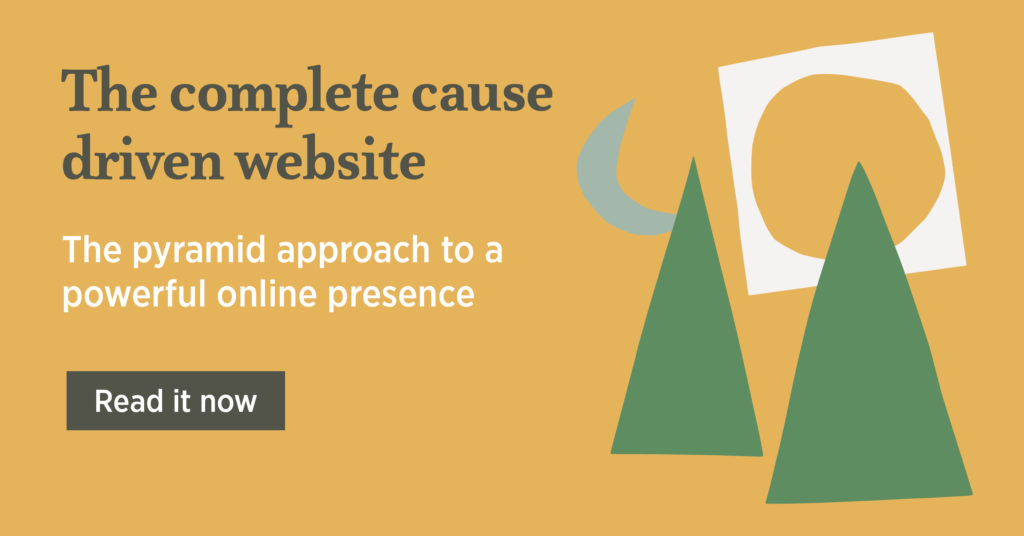In the first part of our series on web accessibility, I explained what accessibility is and why it is important. But who are these users we’re talking about, and how do we serve their specific needs? What are their limitations in an online space and how can we help overcome these limitations? As managers and creators of websites we have the power to remove many of these barriers and make people’s lives easier. You’ll see that in doing this we improve our websites for all users, so why wouldn’t we?
Most disabilities fit into four main categories. These are difficulties with:
- seeing information
- hearing information
- processing information
- physically accessing information
Below I make some key recommendations for how we can improve accessibility for users in each of these categories. While these recommendations are not exhaustive, use them as a starting point when considering the accessibility of your own site.
Vision impairment
This is the category that people first consider when they talk web accessibility. The internet is primarily a visual medium and without being able to see clearly, many users are at a disadvantage.
This category doesn’t just include blind users, but also people with poor or deteriorating vision, colour blindness or glaucoma to name a few.
There are many steps that you can take to improve a vision impaired person’s experience of your website including:
- Meeting the colour contrast and font size requirements of WCAG
- Well written and valid HTML that improves screen reader compatibility
- Consistency in the positioning of elements and navigation
- Not relying on purely visual cues such as images and colours to communicate information or to create the environment of your site
Auditory impairment
Whilst the Internet is a primarily visual medium, with the increasing pervasiveness of online video and multimedia, auditory impaired users are increasingly being affected.
The solution in this case is simple. Whenever you display video with an audio track on your website either include captions in the video or provide a transcript. Creating a transcript is not only super easy but also means that Google will be able to see what is in your video as well (SEO for the win).
Cognitive impairment
Users with cognitive impairments are not able to process information as easily as other users. These users can include people with Down’s Syndrome, Autism Spectrum disorders or global developmental delay.
These users benefit from the following:
- Accurately matching the complexity of the language used to the target audience
- Ensuring consistency of site-wide elements so that links look and function the same on every page
- Instructions and help for users through the learning curve of the site
- Clear and well thought-out typography that is easy to read for all people, including those with conditions like Dyslexia
Motor impairment
Users with motor impairment often experience difficulty navigating websites with traditional mice and trackpads, sometimes relying on specialist technology and keyboard navigation. Users who experience motor impairment often lack muscle control, having conditions like Parkinson’s, Muscular Dystrophy and Cerebral Palsy.
When using websites, these users often navigate using the keyboard alone, which means that there must be a consistency of the position of elements on the page and well laid-out and structured HTML.
Access for all benefits everyone
You may notice a common theme with a lot of the recommendations listed here. The simplicity that would benefit a cognitively impaired user has flow-on benefits for older users, internet newbies and users new to the subject. The consistency that would benefit motor impaired users would also benefit people that are new or unfamiliar with the website, users with older or obsolete technology and people that are on the phone with one hand and using the website with the other. Once again we return to the fact that web accessibility isn’t just for people with a disability but that a highly accessible website will benefit the vast majority of web users.
When using the internet we shouldn’t consider any users “disabled”. Poor web design hinders some users more than others. Living with disability has a wide variety of implications in the “real world”, but the only reason someone can’t do something online is because a website hasn’t been built to enable them to do it.
Future posts in this series will dive into some of the more technically specific ways of making sure your website is accessible, as well as ways that content managers can ensure that accessibility is maintained after the site has been built.
Topics: Digital



